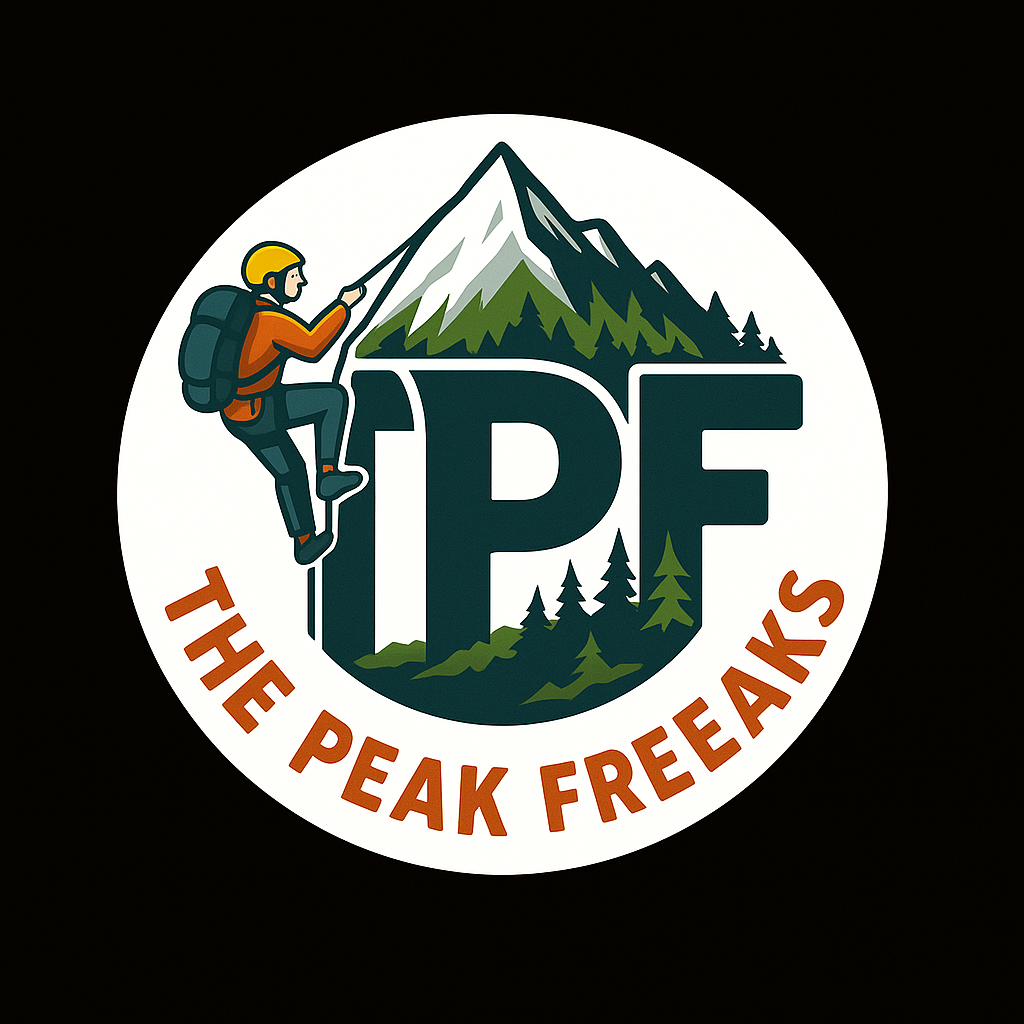Friendship Peak Trek
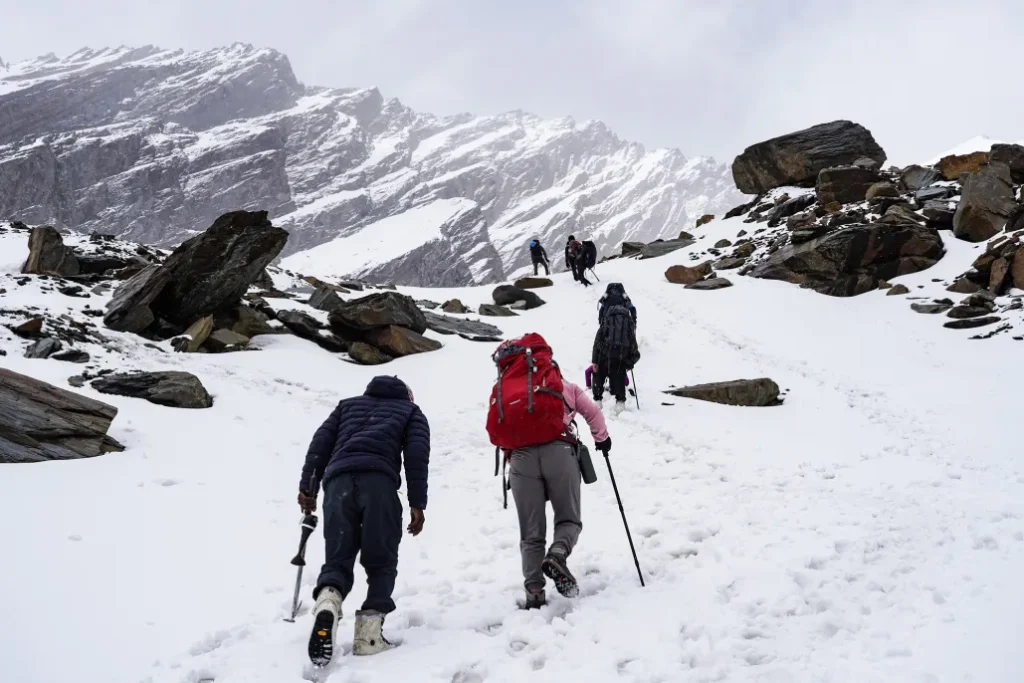
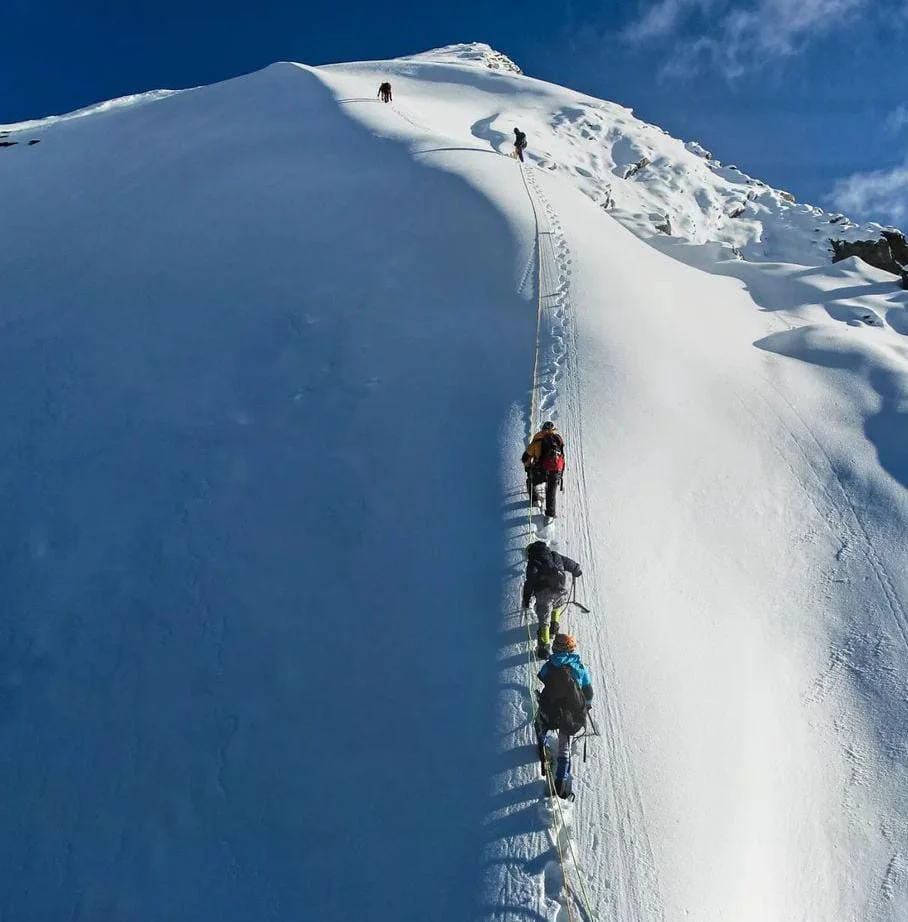
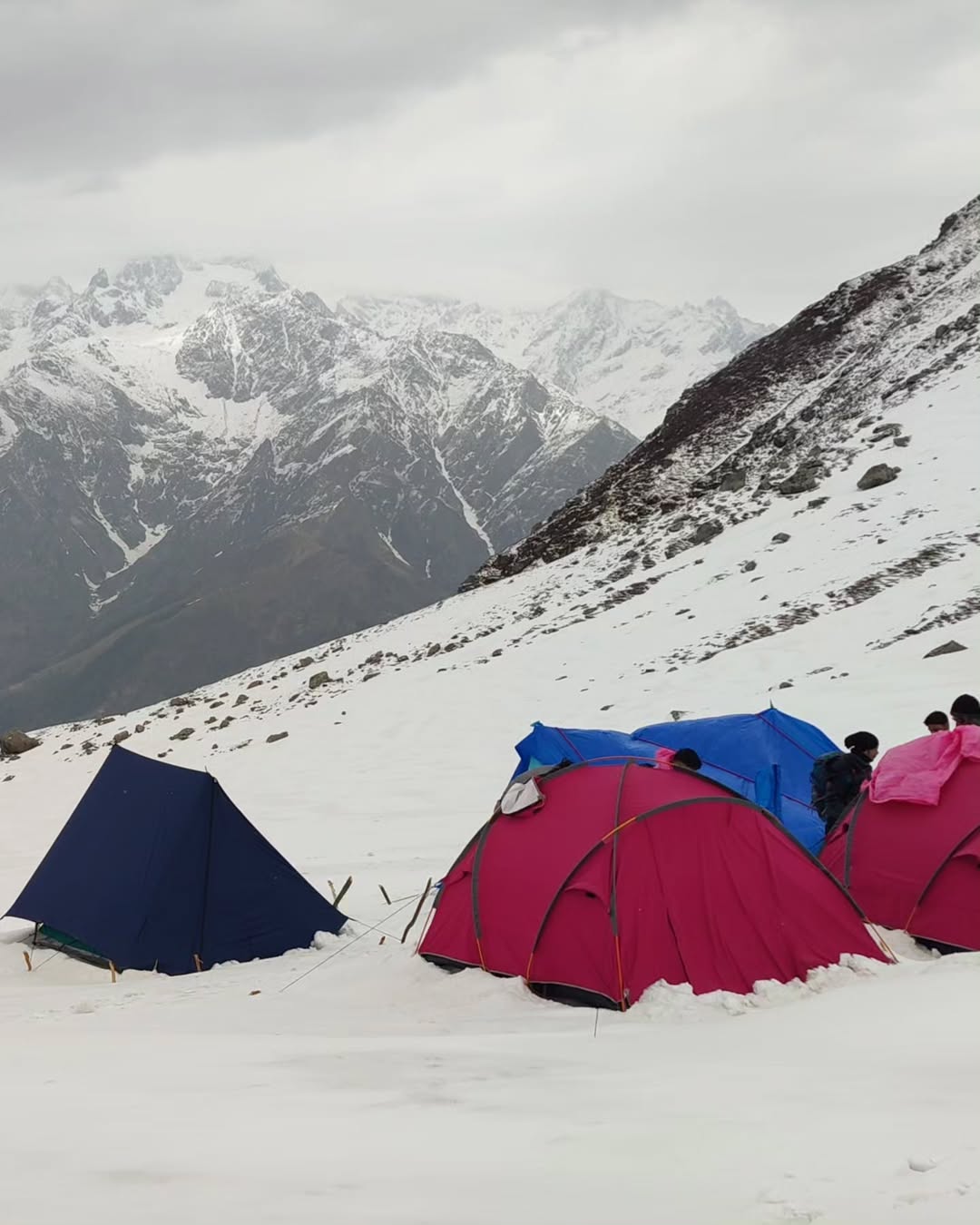
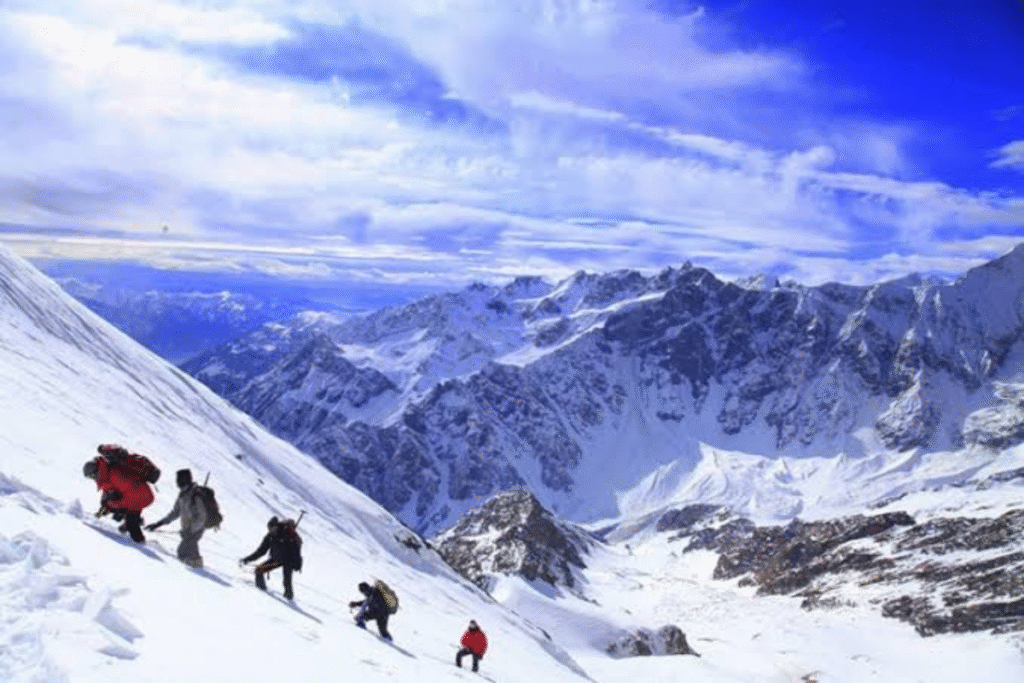
from
(Rs.25,000)
Duration
(6D/5N)
Height
(17,346ft)
Distance
(34 km)
Overview:
The Friendship Peak Trek is a high-altitude expedition in the Pir Panjal range of the Himalayas, starting from the beautiful town of Manali. This trek takes you to the summit of Friendship Peak, which stands tall at 17,346 ft, offering one of the most stunning 360° views of the Himalayan giants like Hanuman Tibba, Shitidhar, Deo Tibba, and Indrasan.
It is one of the few non-technical peaks in India where trekkers (not just climbers) can reach such high altitudes without needing advanced mountaineering gear. However, it’s still challenging and demands physical fitness, mental stamina, and prior trekking experience.
🌿 Why is Friendship Peak Special?
- It’s a trekking summit—which means no ropes or technical climbing are required, but you still get the thrill of a true Himalayan summit expedition.
- You pass through dense forests, alpine meadows, glaciers, and snow-covered slopes—making it incredibly scenic and diverse.
- You get the chance to train in snow walking, using crampons, and handling steep ascents, guided by experts.
- It’s perfect for experienced trekkers who want to transition into mountaineering or prepare for bigger expeditions like Stok Kangri or Mt. Yunam.
🏞️ What Will You Experience?
- Camping in scenic locations like Bakar Thach and Lady Leg
- Trekking through lush oak and deodar forests, and crossing moraines and icy slopes
- Walking over snowfields, crevasses, and using ice axes or crampons (as required)
- Watching the sunrise from the summit with breathtaking views of towering Himalayan peaks
- Learning basic techniques like rope handling, team climbing, snow balance, and glacier navigation
🔍 Who is This Trek For?
The Friendship Peak Trek is for fit and experienced trekkers who:
- Have completed moderate to difficult treks (like Kedarkantha, Hampta Pass, or Rupin Pass)
- Are comfortable walking 6–8 hours per day in rough terrain
- Can handle cold temperatures, high altitude, and physical challenges
- Want to train for mountaineering or experience a real summit expedition
This is not recommended for first-timers or casual hikers.
Trek Highlights:
📍 Location: Manali, Himachal Pradesh
⛰️ Altitude: 17,346 ft (5,289 m)
📅 Best Time: May–June & September–October
⏳ Duration: 6–9 Days (depending on itinerary)
🎒 Difficulty Level: Difficult (Requires prior high-altitude trekking experience)
🌄 Trek Type: Expedition-style Summit Trek
Why You’ll Love the Hampta Pass Trek
• It offers a real Himalayan summit experience without technical climbing
• Spectacular 360° panoramic views of Himalayan peaks
• Diverse landscapes—from forests to glaciers and snowfields
• Opportunity to learn basic mountaineering skills
• A challenging trek that builds endurance and confidence
Trek Difficulty Level
1. Physical Fitness Required: High
- The trek demands good cardiovascular fitness and stamina because you’ll be walking for 6–8 hours per day on uneven, steep, and sometimes slippery terrain.
- You need to be comfortable with long uphill climbs, especially on the summit day, which involves a steep snow ascent.
- Pre-trek training like brisk walking, jogging, stair climbing, and strength exercises is highly recommended.
2. Altitude Challenges: Significant
- The trek climbs to a maximum altitude of 17,346 ft (5,289 m), which is considered high altitude.
- Altitude sickness (AMS) is a risk, so proper acclimatization days are included.
- Symptoms like headache, nausea, dizziness, and fatigue can occur if not properly acclimatized.
- You must listen to your guide and take rest if feeling unwell.
3. Terrain: Mixed & Challenging
- The trail covers different types of terrain:
- Forests and meadows at lower altitudes (easy walking)
- Rocky and steep slopes as you gain height (moderate difficulty)
- Snowfields and glaciers near the summit (requires careful footing, use of crampons, and ice axe)
- The summit day has some steep snow climbing sections which are physically and mentally demanding.
4. Technical Skills: Basic Mountaineering
- The trek is non-technical, meaning no advanced climbing skills are needed.
- However, you will be taught basic skills such as:
- Walking with crampons on snow
- Using an ice axe for balance
- Following rope lines during steep climbs
- Guides provide full training and support during the trek.
5. Weather Conditions: Cold and Variable
- Temperatures can drop below freezing, especially at night and near the summit.
- Weather can change quickly—from sunshine to snowfall or strong winds.
- Proper layering and winter trekking gear are essential to stay warm and safe.
Overall Difficulty: Difficult
Beginners or casual hikers are not recommended for this trek unless accompanied by a professional mountaineering team and adequate training.
Friendship Peak Trek is considered difficult due to altitude, steep snow climbs, and physical endurance required.
It is best suited for experienced trekkers with prior high-altitude trekking experience.
Friendship Peak Trek Detailed Itinerary:
Day 1: Arrival in Manali & Trek Briefing
- Arrive at Manali (elevation 6,726 ft / 2,050 m) by your own transport.
- Meet your trek guide and team; attend trek briefing about route, safety, and equipment.
- Check your gear and buy any last-minute supplies.
- Overnight stay in a guesthouse or hotel in Manali.
Day 2: Manali to Solang Valley to Bakar Thach (Trek Start)
- Drive from Manali to Solang Valley (about 14 km, 30–40 mins).
- Begin trek from Solang Valley to Bakar Thach (about 6–7 km, 4–5 hours).
- Trail passes through pine and deodar forests, with gradual ascent.
- Set up camp at Bakar Thach (10,500 ft / 3,200 m).
- Overnight camping under stars.
Day 3: Acclimatization and Training at Bakar Thach
- Rest day for acclimatization.
- Practice basic mountaineering skills: crampon walking, ice axe handling, rope techniques.
- Short acclimatization hikes around the camp to prepare for higher altitudes.
- Overnight camping at Bakar Thach.
Day 4: Bakar Thach to Friendship Peak Base Camp (Lady Leg)
- Trek from Bakar Thach to Lady Leg Base Camp (approx. 6–7 km, 4–5 hours).
- Terrain becomes steeper, trail passes rocky areas and some snow patches.
- Set up camp at Lady Leg (around 13,500 ft / 4,100 m).
- Rest and prepare for summit push.
- Overnight camping.
Day 5: Acclimatization and Preparations at Base Camp
- Rest and acclimatization day at Lady Leg.
- Further mountaineering training and equipment checks.
- Briefing on summit day plan and safety protocols.
- Overnight camping at Lady Leg.
Day 6: Summit Day – Lady Leg to Friendship Peak Summit and Back to Base Camp
- Start early pre-dawn (around 3–4 AM) for summit push.
- Trek 4–5 hours steeply uphill over snowfields and glacier to reach the summit at 17,346 ft (5,289 m).
- Enjoy panoramic views of the Himalayas and take photos.
- Descend back to Lady Leg Base Camp (4–5 hours).
- Celebrate the successful summit.
- Overnight camping at Lady Leg.
Day 7: Lady Leg Base Camp to Solang Valley to Manali
- Trek down from Lady Leg to Solang Valley (6–7 km, 3–4 hours).
- Drive from Solang back to Manali.
- Check into hotel, rest, and celebrate the trek completion.
- Optional sightseeing or shopping in Manali.
- Overnight stay in hotel.
Day 8: Departure from Manali
- Breakfast and final moments in Manali.
- Departure by your own transport to onward destination.
✅ Inclusions — What’s Included in Your Trek Package
At The Peak Freaks, we aim to provide a seamless, safe, and immersive trekking experience. Your trek fee includes:
🏕️ Accommodation:
- Stay in high-quality alpine tents on twin/triple sharing basis during the trek.
- Sleeping bags, foam mattresses, and pillows provided at each campsite.
- Separate kitchen and dining tents at campsites.
🍽️ Meals:
- All meals during the trek – nutritious, freshly prepared vegetarian food (breakfast, lunch, evening tea/snacks, and dinner).
- Clean drinking water (boiled or filtered) available at all camps.
- Meals start with lunch on Day 1 and end with breakfast on Day 8.
👨✈️ Trek Team & Safety:
- Experienced and certified trek leaders and local guides for the entire route.
- Support staff including cook, helpers, and porters for logistics and camp setup.
- First Aid medical kit, oxygen cylinder, and pulse oximeter for altitude monitoring.
- Radio/walkie-talkie for communication where needed.
🧳 Logistics:
- Transportation from Manali to Solang Valley and Solang Valley back to Manali in shared vehicles.
- All trekking permits and forest entry fees.
- Mule/porter support for carrying common equipment (tents, kitchen gear, etc.).
💼 Other Perks:
- Pre-trek briefing and orientation in Manali.
- Basic hygiene kit at camps (toilet tents, wash basins, etc.).
- Access to emergency backup vehicle at Chatru (subject to availability).
- Certificate of completion at the end of the trek.
❌ Exclusions — What’s Not Included
While we cover most essentials, a few things are not included and need to be arranged by you:
🚐 Transport:
- Travel to and from Manali from your city/home (bus/train/flights).
- Any personal cab or private vehicle bookings for early return or side visits.
🥾 Personal Equipment:
- Trekking gear like shoes, jackets, poles, gloves, and backpack (can be rented).
- Personal medicines, sunscreen, lip balm, and toiletries.
- Power bank, headlamp/torch with extra batteries.
💰 Other Costs:
Tips/gratuity for guides, cooks, or staff (optional, but appreciated).
Any costs arising due to delays, natural calamities, roadblocks, or medical emergencies.
Hotel stay in Manali before or after the trek.
Snacks, bottled water, or beverages not included in group meals.
Charges for visiting Chandratal Lake (if roads are closed or need private vehicle).
🧳 Things to Carry for Hampta Pass Trek
Packing smart is key for a safe and comfortable Himalayan experience. Here’s your complete checklist:
🧥 Clothing (Layering is essential)
- 2 full-sleeve quick-dry t-shirts (one for trek, one spare)
- 1 light fleece jacket or pullover
- 1 heavy down or padded jacket (for high-altitude cold)
- 2 pairs of trekking pants (preferably quick-dry; avoid jeans)
- Thermal innerwear (top & bottom) – 1 pair
- 3 pairs of woolen/trekking socks + 2 regular socks
- 1 woolen cap + 1 sun cap or hat
- 1 pair of gloves (1 woolen, 1 waterproof if possible)
- Raincoat/poncho (a must for sudden showers)
- Buff or scarf (for neck/head protection)
🥾 Footwear
- Sturdy trekking shoes with good grip and ankle support (already broken-in)
- 1 pair of slippers/sandals for campsites
🎒 Bags
- 1 backpack (50–60L) with rain cover
- 1 daypack (10–15L) for water, camera, and essentials (if you’re offloading main bag)
🧼 Toiletries & Hygiene
- Toothbrush, toothpaste, face wash
- Biodegradable soap or wipes
- Quick-dry towel
- Toilet paper & tissues
- Hand sanitizer, lip balm, moisturizer, and sunscreen (SPF 50+)
- Menstrual hygiene products (if applicable)
💊 Personal Medications & First Aid
- Personal medication (if any)
- Basic medicines: Crocin, Combiflam, Avomine (motion sickness), Digene, ORS, antiseptic cream
- Band-aids, crepe bandage, cotton, Dettol
- Diamox (only after consulting your doctor) for altitude sickness
🔦 Accessories
- Headlamp/torch with extra batteries
- Sunglasses (UV-protected, wraparound preferred)
- Water bottle (1L) or hydration pack
- Energy bars, dry fruits, ORS packets, glucose
- Trekking pole (optional but helpful for beginners)
📱 Miscellaneous
- Power bank (mobile charging is not available on trail)
- Camera/GoPro (optional)
- Small notebook & pen (for journaling)
- Identity proof (Aadhaar card or passport photocopy)
⚠️ Important Trekking Tips
Make the most of your Himalayan adventure with these helpful tips from The Peak Freaks team:
🧠 Before the Trek
- Prepare physically: Cardio, squats, and leg strengthening exercises 3–4 weeks before the trek.
- Avoid alcohol and smoking at least 1 week before — they affect your oxygen levels.
- Get a medical check-up if you have existing health conditions or are above 45.
🌄 During the Trek
- Hydrate constantly — drink at least 3–4 liters of water daily.
- Pace yourself — slow and steady wins the mountain! Avoid racing ahead.
- Don’t skip meals — your body needs fuel for high-altitude hiking.
- Inform your trek leader immediately if you feel dizzy, breathless, or nauseous.
🛑 Safety & Environment
• No littering — keep the Himalayas clean. Use waste bags for wrappers or plastic.
• Stay with the group — straying from the trail can be risky.
• Respect the local culture and wildlife — be a responsible trekker.
• Always keep head and ears covered in high winds or cold conditions.
Enjoy Our Best Quality Trekking Experience
Experience the best of Himachal with ThePeakFreaks—expert-guided treks, stunning views, and top-quality service for every adventure lover.
1. What is included in the trekking package
Our packages typically include accommodation, meals, guides, permits, and transportation from base to trek start. Exact inclusions vary by trek.
2. What should I pack for a Himachal trek
Essential items include trekking shoes, layered clothing, rain gear, water bottles, basic medicines, flashlight, and ID proof. A full checklist is provided upon booking.
3. Is prior trekking experience necessary
No, many of our treks are beginner-friendly. However, we also offer challenging routes for seasoned trekkers.
4. How safe are the treks organized by ThePeakFreaks
Safety is our top priority. Our expert guides, first-aid kits, and emergency protocols ensure you’re in good hands throughout.
5. What are the best months to trek in Himachal need to prepare
April to June and September to November are ideal due to clear skies, pleasant weather, and accessible trails.
6. Are solo trekkers allowed to join
Absolutely! Solo travelers can join group departures and connect with like-minded adventurers.

